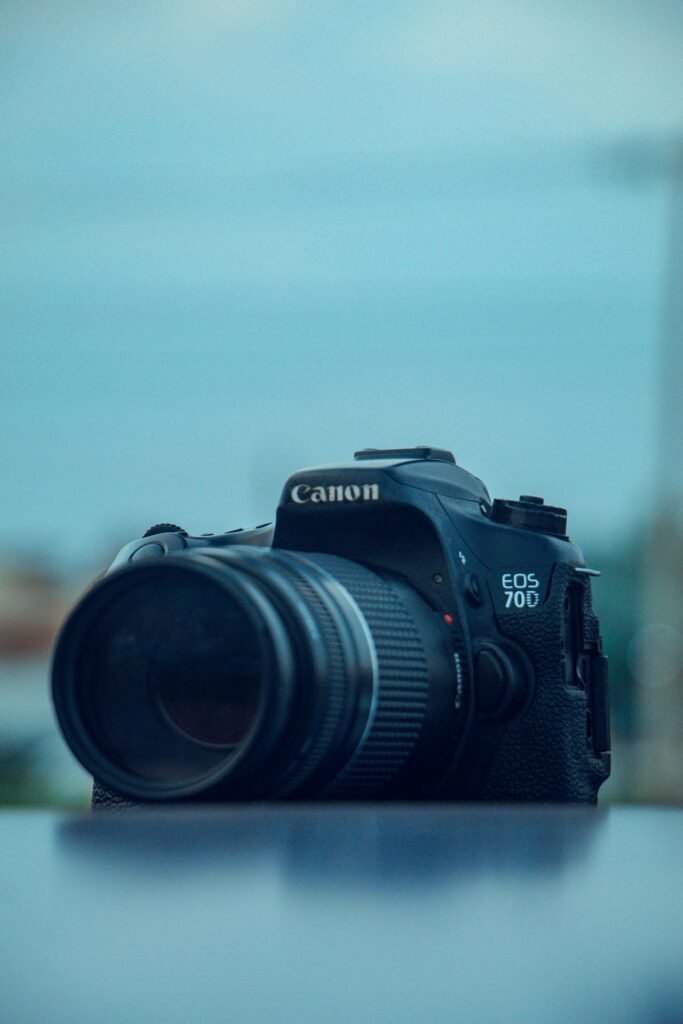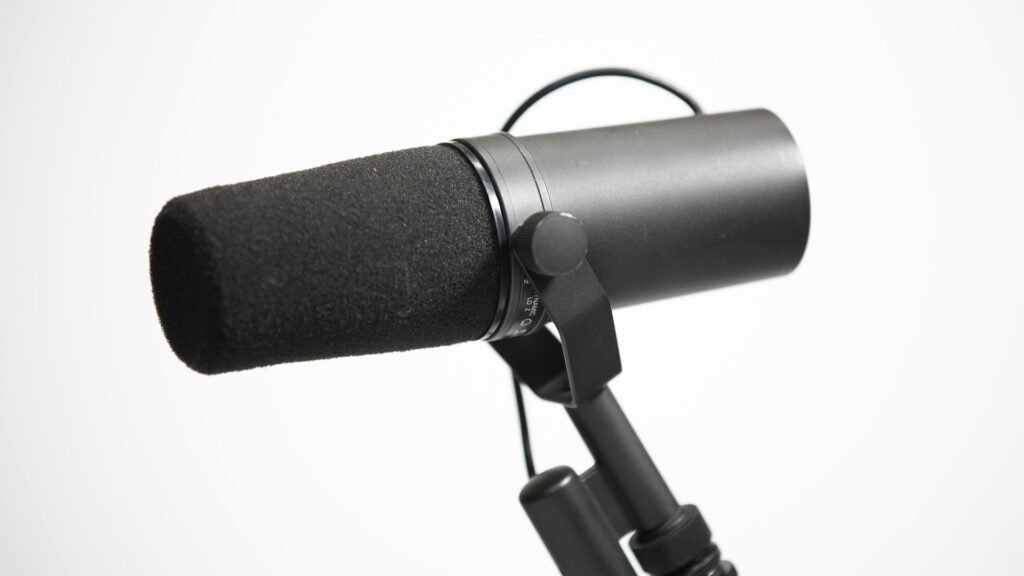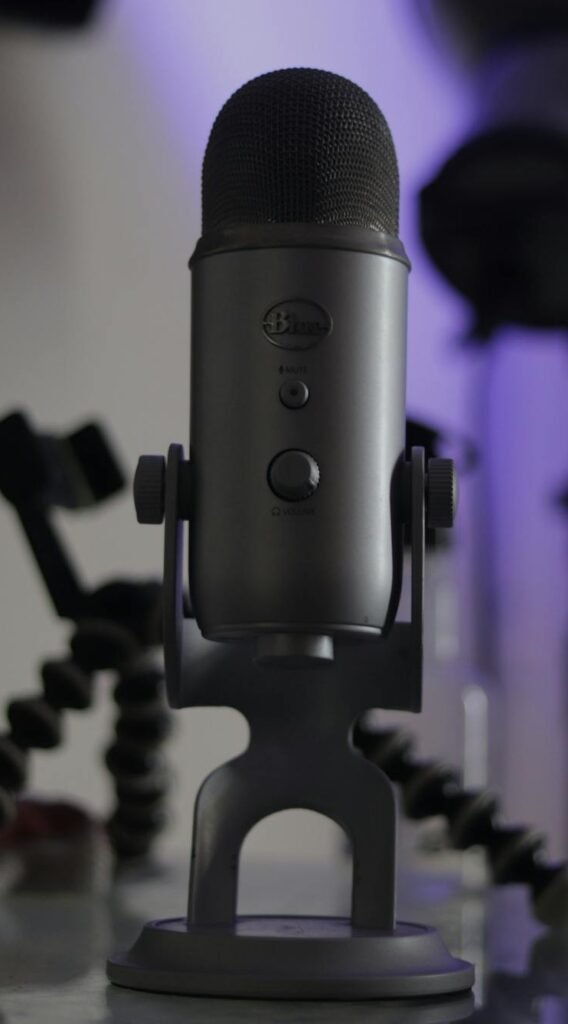Disclosure: We may earn money from the companies mentioned in this post, but we only recommend brands that we truly love and trust.
Canon EOS Rebel T7 Review: A Versatile DSLR for Photographers and Creators
The Canon EOS Rebel T7 (also known as the Canon EOS 2000D in some regions) is a highly popular entry-level DSLR camera that combines ease of use with impressive performance. Targeted at beginner photographers, hobbyists, and content creators, this camera provides a solid foundation for capturing stunning images and videos. With a 24.1 Megapixel CMOS sensor, a wide ISO range of 100-6400 (expandable to 12800), and a 9-point autofocus system, the EOS Rebel T7 is designed to deliver high-quality results in various shooting scenarios.
In this review, we will break down the features of the Canon EOS Rebel T7, assess its performance in different photography situations, and evaluate whether it’s a good investment for beginner photographers and creators who want to step up their imaging game.
Design and Build Quality: Lightweight and User-Friendly
One of the first things you’ll notice about the Canon EOS Rebel T7 is its compact and lightweight design. Weighing just 475 grams (body only), the T7 is relatively easy to handle, making it an excellent choice for those who need a camera that’s portable without sacrificing functionality. The ergonomically shaped body fits comfortably in your hands, which is ideal for long photo shoots or shooting video content.
The controls on the Rebel T7 are intuitive and easy to navigate, which makes this camera perfect for beginners. The top-mounted dial allows you to quickly switch between modes such as portrait, landscape, and macro, while the menu system is simple enough to follow for first-time DSLR users. Additionally, the 3.0-inch LCD screen provides a clear and vibrant display for reviewing images or adjusting settings, although it doesn’t feature a touchscreen, which might be a drawback for some users accustomed to more modern camera controls.
While the design isn’t particularly groundbreaking or luxurious, the T7’s build quality is robust for an entry-level DSLR, and it is durable enough to handle typical use. However, it’s worth noting that the camera does not have full weather sealing, so you’ll need to take care when using it in wet conditions.
Image Quality: Powerful 24.1 Megapixel CMOS Sensor
The Canon EOS Rebel T7 boasts a 24.1-megapixel APS-C CMOS sensor, which is capable of producing sharp, detailed images with vibrant colors. This sensor is a solid performer for entry-level photographers and offers more than enough resolution to print high-quality images at 8×10 or even larger sizes.
The APS-C sensor size is common in most entry-level and mid-range DSLR cameras, offering a good balance between image quality, depth of field control, and noise performance. In daylight or well-lit environments, the T7’s dynamic range is impressive, allowing you to capture subtle details in both highlights and shadows.
In low-light conditions, the camera’s ISO range of 100-6400 (expandable up to 12800) ensures that you can still achieve clean images with minimal noise. While the T7’s noise performance isn’t on par with higher-end models, it’s good enough for most users. You can push the ISO in situations like indoor photography or evening shoots, but noise may become noticeable at higher settings.
The T7 is also capable of capturing Full HD 1080p video at 30 fps, which is an excellent feature for content creators or casual vloggers. The manual control over video settings allows you to adjust exposure and focus while recording, which adds creative flexibility. However, for more professional video features, you may need to consider other cameras with 4K capabilities or advanced video features.
Autofocus System: Fast and Reliable Performance
The 9-point autofocus (AF) system on the Canon EOS Rebel T7 provides accurate and fast focusing for general photography. This system covers the center and some of the surrounding areas of the frame, ensuring that the camera can lock onto subjects relatively quickly in most shooting situations. The AI Servo AF mode helps track moving subjects, making it useful for shooting action, sports, or wildlife photography.
While the 9-point AF system is decent for an entry-level DSLR, it’s worth noting that higher-end models typically feature more advanced AF systems with additional points of coverage. For beginner photographers, the T7’s system will likely provide adequate performance, but more experienced photographers may find it limiting, especially in fast-paced or low-light situations.
The Live View mode provides additional autofocus options for shooting video or capturing photos at awkward angles. However, the autofocus in Live View is not as fast or reliable as the phase-detection AF used when shooting through the optical viewfinder. The lack of a dual-pixel autofocus system (which is found in some higher-end Canon models) makes Live View autofocus a bit slow compared to more modern cameras.
Viewfinder and LCD Screen: Clear and Reliable
The optical viewfinder of the Rebel T7 offers approximately 95% coverage of the frame, which is pretty standard for entry-level cameras. While it may not provide a 100% view of the scene like more expensive DSLRs, the viewfinder gives you a clear, natural view of your subject without the delay that can come with electronic viewfinders or Live View mode.
The 3.0-inch LCD screen on the back of the camera offers good resolution and color accuracy, making it easy to review images or adjust settings. However, the screen is non-articulating, meaning you can’t flip it around for selfies or vlogging. This is a limitation for content creators who may want more flexibility when framing shots at odd angles.
Though the LCD screen is relatively good for reviewing shots, it’s not a touchscreen, so you’ll need to rely on the physical buttons and dials to navigate menus and settings. It would have been nice to have touchscreen functionality for more intuitive control, especially for newer users who are used to smartphones and tablets.
Wi-Fi and NFC Technology: Easy Sharing and Remote Control
One of the standout features of the Canon EOS Rebel T7 is its built-in Wi-Fi and NFC (Near Field Communication) capabilities. These features allow you to wirelessly connect the camera to your smartphone, tablet, or computer for easy sharing of photos and videos. This is particularly useful for on-the-go photographers who want to quickly upload images to social media or send them to friends and family.
Additionally, the EOS Utility Webcam Beta Software allows you to turn your Rebel T7 into a high-quality webcam for streaming or video conferencing. This feature is perfect for remote workers, streamers, and content creators who want to use a DSLR camera instead of a standard webcam for better image quality.
Battery Life: Solid Performance for Extended Shoots
The Canon EOS Rebel T7 is powered by an LP-E10 rechargeable battery, which provides a respectable 500 shots per charge according to CIPA standards. This is fairly typical for entry-level DSLRs and should be enough for a full day of shooting in most cases. However, if you’re planning to shoot extensively or for long hours, it’s a good idea to carry an extra battery, as video recording and using Wi-Fi features can drain the battery faster.
Performance in Different Scenarios
Studio Photography and Portraits
Thanks to its 24.1MP sensor and excellent color reproduction, the Canon EOS Rebel T7 is capable of producing stunning portrait shots with beautiful background blur, particularly when paired with a prime lens like the 50mm f/1.8. The wide ISO range ensures that you can capture clean, noise-free images even in indoor settings or low-light environments. While the autofocus system may not be as fast or advanced as more expensive models, it will still do the job for most general portrait photography.
Landscape and Travel Photography
For landscape photography, the Rebel T7 provides sharp, vibrant images with plenty of detail. Its wide dynamic range helps retain details in both shadows and highlights, especially in bright, outdoor settings. The 24.1MP resolution gives you plenty of room for cropping or printing large-format photos, making it a great option for travel photographers looking to capture beautiful sceneries.
Video and Vlogging
While the Canon EOS Rebel T7 shoots 1080p Full HD video, its video capabilities are more basic compared to higher-end cameras that support 4K video. The manual controls allow for decent video creation, but if you need advanced video features like 4K resolution, focus peaking, or advanced video codecs, you may need to look at more premium models. That said, for beginners, the T7’s video quality is more than adequate for casual vlogs, YouTube videos, or family recordings.
Final Thoughts: A Great Entry-Level DSLR for Photographers and Content Creators
The Canon EOS Rebel T7 is a fantastic option for beginner photographers and creators looking for a reliable, high-performance camera that doesn’t break the bank. With its 24.1MP sensor, wide ISO range, and Wi-Fi/NFC capabilities, it delivers excellent image quality, ease of use, and flexibility for a variety of shooting scenarios.
Although it lacks some of the advanced features of more expensive models—such as 4K video or a fully articulated touchscreen—the Rebel T7 still provides exceptional value for money and is a solid foundation for any beginner looking to take their photography and content creation to the next level.
If you’re looking for a simple, user-friendly DSLR that delivers impressive photos the Canon EOS Rebel T7 is for you!



